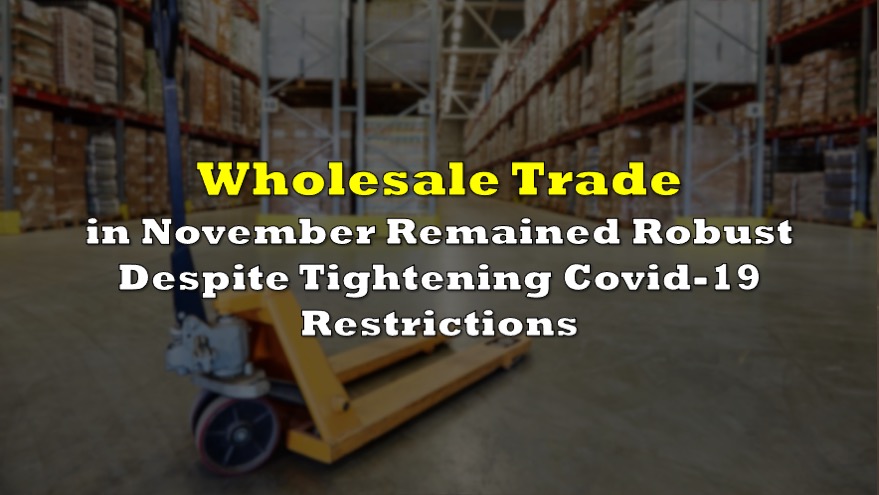Wholesale sales increased for the seventh consecutive month in November, despite the tightening of Covid-19 restrictions prior to the holidays.
According to Statistics Canada, wholesale sales grew by 0.7% to a record-high of $64.7 billion in November, with six of the seven subsectors reporting stronger sales than prior to the pandemic. The increase in wholesale trade was primarily focused in the machinery, equipment and supplies subsector, as well as the building material and supplies subsector, as domestic sales of Canadian goods continue to remain elevated following a decline in the country’s export and import levels.

The demand for wholesale goods remained robust throughout November, despite the tightening of public health restrictions in some regions of the country. However, many of the more restrictive measures did not come into effect until December, so the full impact of the second wave of Covid-19 still remains unknown. Nonetheless, November sales came in 4.4% higher than February’s pre-pandemic levels, and nearly all subsectors noted higher year-over-year growth.
The recovery for Canada’s wholesale trade sector has been primarily focused in the machinery, equipment and supplies subsector, as well as the building material and supplies subsector— both of which have prevailed exceptionally well since the economic decline in March and April. Statistics Canada attributes the anomaly to the nature of the products being sold in these subsectors, such as computers, smartphones, large machinery, and home renovation materials. That is largely in part because they have been tied closely to the businesses and activities that have been allowed to continue amid the pandemic and remain in high demand.
Sales in the machinery, equipment and supplies subsector surpassed February 2020 levels by $1.3 billion, significantly increasing growth levels observed across all other subsectors. The building material and supplies subsector rose 1.1% to $10.2 billion, which is $1.1 billion above pre-pandemic levels. Meanwhile, sales in the motor vehicle and motor vehicle parts and accessories subsector fell by 1.8% to $11.1 billion, failing to exceed February’s levels.
Wholesale inventories declined for the second straight month in November, falling by 0.6% to $89.6 billion— the lowest level since March 2019. All seven of the subsectors reported diminished inventories, especially the machinery, equipment and supplies subsector, which saw levels drop by 1.1% to $26.6 billion. The inventory-to-sales ratio, which measures the number of months it would take to exhaust all inventories given the current sales pace, also declined for the second consecutive month to 1.33— the lowest level since May 2018.
Information for this briefing was found via Statistics Canada. The author has no securities or affiliations related to this organization. Not a recommendation to buy or sell. Always do additional research and consult a professional before purchasing a security. The author holds no licenses.









